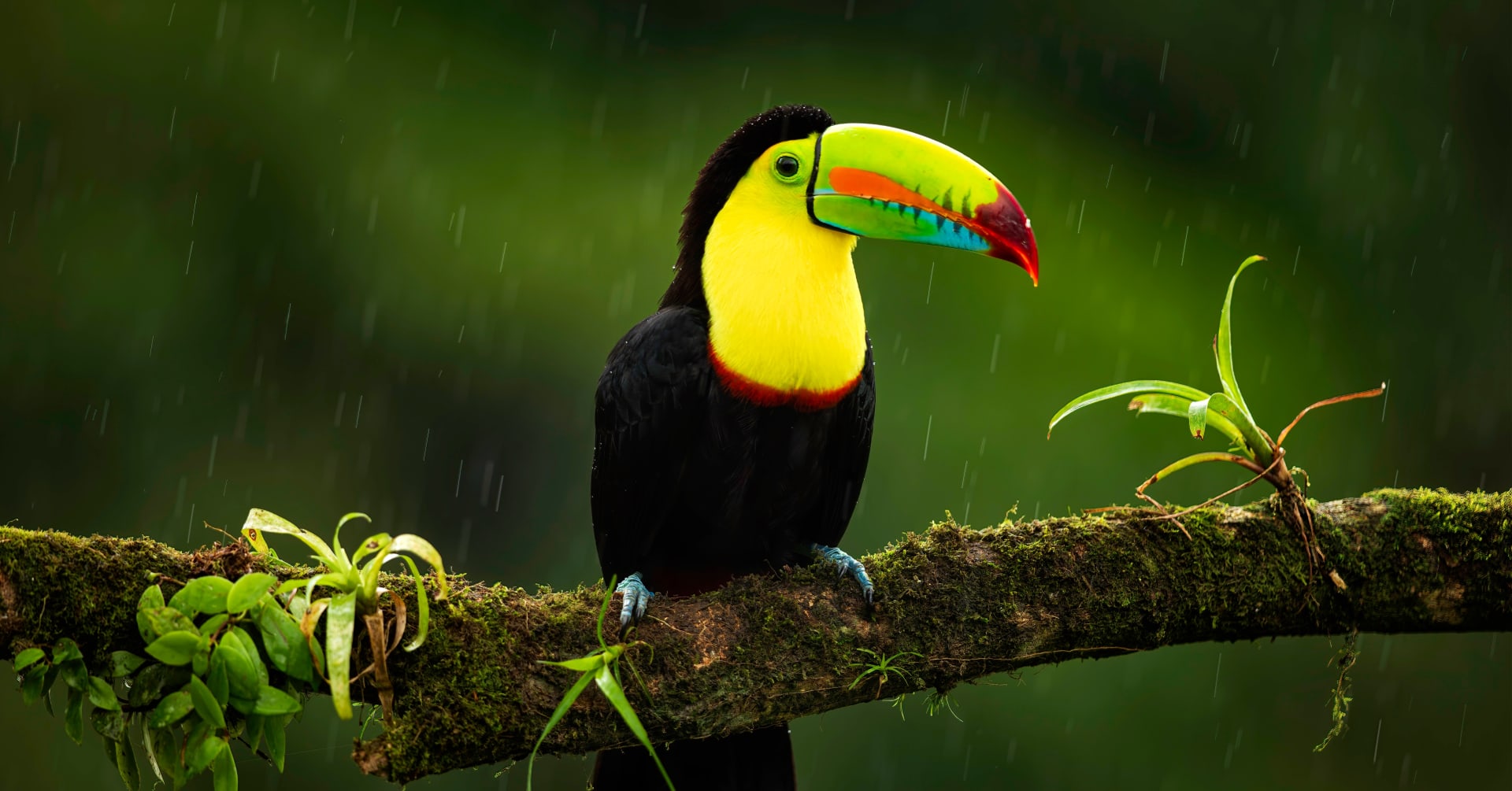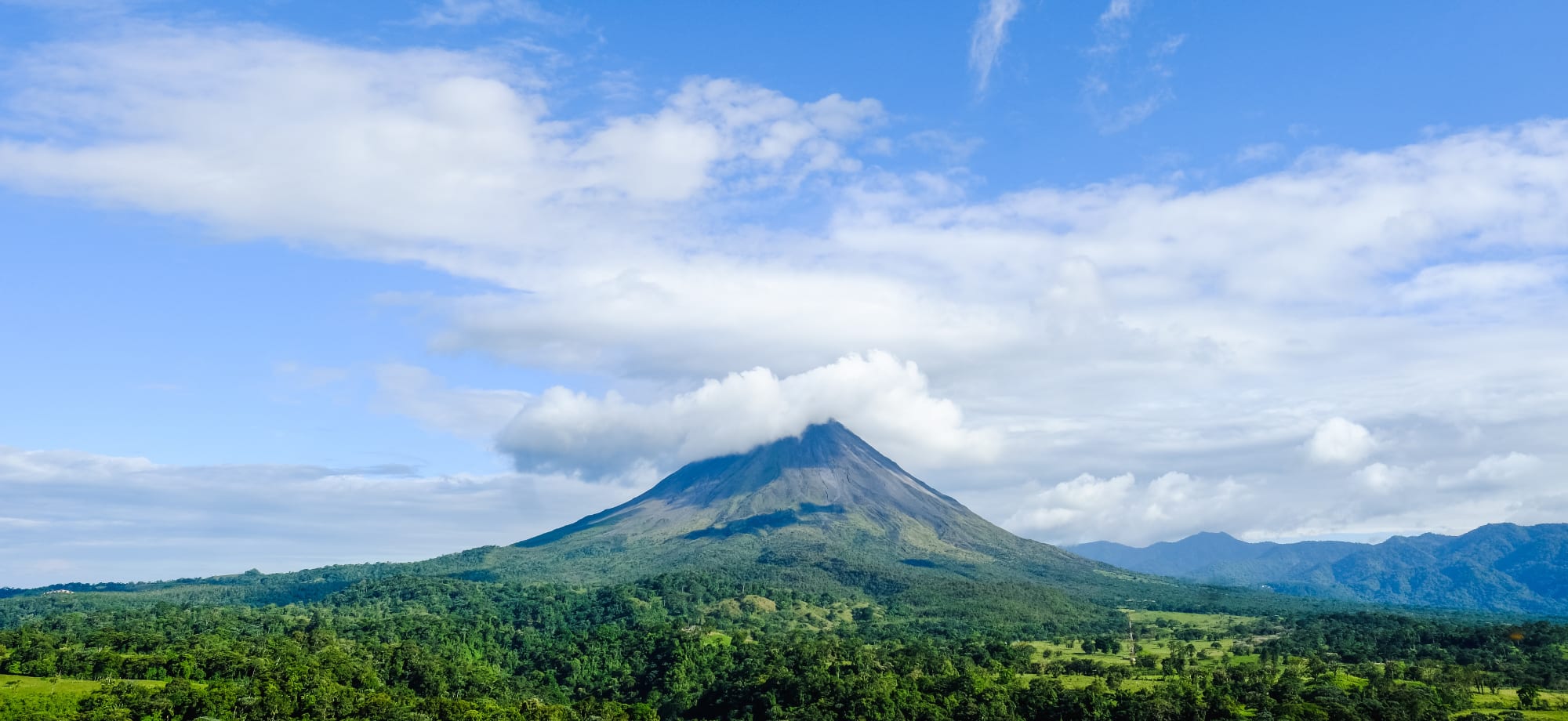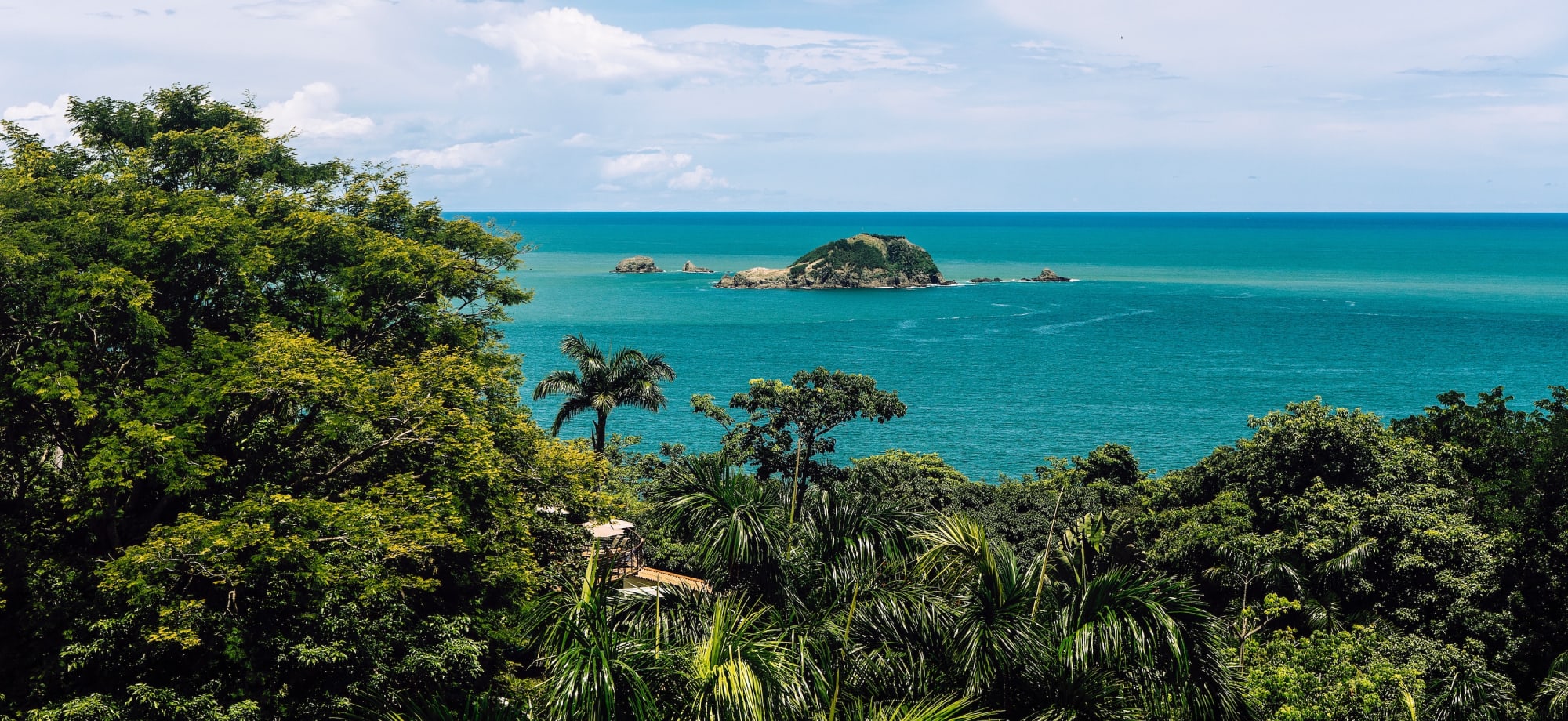The best places to visit in Costa Rica to experience the country's incredible wildlife
Costa Rica may be one of the smaller countries in Central America, but this does not speak to its abundance of wildlife. Homing over 500,000 species, the country represents nearly 5% of estimated worldwide species, dispersed amongst verdant forests, coastal waters, and freshwater habitats.
Your holiday to Costa Rica will undoubtedly be spent darting your eyes upwards and downwards, as the country’s rich diversity in vegetation shapes an ideal abode for bustling birds and wily snakes alike.
Costa Rica is celebrated for its responsibility towards wildlife, as numerous national parks scatter the landscape, all of which do their part towards conservation and preservation.
These areas offer you a guiding hand on your adventure across Costa Rica, providing vast opportunities to seek out astounding wildlife as responsible, compassionate guests to their stunning habitats.
At Wayfairer, we prioritise the preservation of the natural world and aim to ensure your observation of these animals are in their habitats rather than enclosures or artificial environments.
This list ensures a mixture of national parks and alternative wildlife spectacles, offering a range of central and coastal destinations worth visiting on your holiday to Costa Rica.
1. Manuel Antonio National Park
2. Tortuguero National Park
3. Dominical and Uvita
4. Monteverde Cloud Forest
5. Los Quetzales National Park
6. Tarcoles Bridge
7. Arenal Volcano
8. Veragua Rainforest
9. Curu Wildlife Refuge
10. The Catalinas Islands

|
Manuel Antonio National Park
Best for: Two-toed and three-toed sloths, howlers, and white-faced monkeys and capuchins
It is clear why Manuel Antonio National Park in Costa Rica is such a popular destination for nature enthusiasts. Both inside its regional national park and outside these grounds are spellbinding opportunities to observe wildlife. Positioned on the central Pacific coast, Manuel Antonio National Park encases a small but lively 1,983 terrestrial hectares of beach and rainforest, and 55,000 marine hectares.
Despite its small scale, this shroud of emerald foliage is one of the most bio-diverse of Costa Rica’s manifold of national parks and private reserves. However, the verdancy of this guarded rainforest is especially noteworthy for its adorable and expansive sloth population.
Being renowned for their friendly and lethargic demeanour, sloths can only be found in Central and South American regions. Their comical laziness and emphasised movements make these upside-down animals both a unique and memorable sight to behold. As Manuel Antonio National Park has been instated since 1972, the wildlife within its grounds is familiar with human company, meaning they won’t shy away from a friendly visit!

|
Check out our itineraries including Manuel Antonio National Park:
Tortuguero National Park
Best for: Hawksbill turtles, loggerhead turtles, leatherback turtles, and green sea turtles
This remarkable national park beholds rare sightings of its namesake … take a guess! That’s right, the park works toward the conservation of hawksbill, loggerheads, green and leatherback turtles, providing them with a bountiful beach stretching to nearly 22 miles. This is great for them to nest upon during “arribada” (the group nesting of mother turtles). A visit between September and October is your best bet for witnessing the hatching of these marvellous ocean-bound turtles. However, slightly earlier months offer sightings of nesting adults.
Located in the Limon Province of Costa Rica, you will arrive at the national park via canoe or motorboat, adding the characteristic feeling of seclusion and peace into your holiday to Costa Rica. The lack of roads and “off the beaten track” location is just one manifestation of the park’s genuine affection for wildlife, as an authentic effort is consistently made to maintain the health of Tortuguero’s rich natural environments.

|
Have a look at our itineraries that include Tortugero National Park:
Dominical and Uvita
Best for: Humpback whales and dolphins
These two neighbouring Costa Rica towns pair a bohemian, surfer vibe with astonishing opportunities to observe Humpback whales as they settle amongst South Pacific waters. Visiting these majestic beasts upon their annual migration journey is an unparalleled opportunity that will undoubtedly leave a bold timestamp on your Costa Rica holiday.
While Dominical and Uvita both offer unique off-the-coast whale spotting trips, most likely upon a sleek catamaran, Uvita is more infamously renowned for its sightings.
Marino Ballena National Park, which perches along the suitably named Costa Marino Ballena (“Ballena” translating to whale), protects 5,510 hectares of coastal and marine habitats. The park celebrates its cetacean visitors with a September festival named Festival de Ballenas y Definas, where you can unite with locals to admire Costa Rica’s incredible marine life. As well as offering remarkable whale and dolphin spotting, a vast crescent-shaped coral reef extends astounding snorkelling opportunities for a closer look at more introverted wildlife.

|
Monteverde Cloud Forest
Best for: Tropical birds, snakes, and bustling nocturnal life
The misty natural utopia of Monteverde Cloud Forest Reserve brings you a whirlwind of wildlife encounters. Although a popular tourist destination due to its unique ambience and biodiversity, its expansiveness and verdancy make your visit feel peaceful and immersive.
The park’s vast aviary population makes it a bird-watchers paradise! Casting your eyes upward to mossy canopies, many tropical birds flutter about, including the whimsical Keel-billed toucan and the delicate Amazonian motmot.
Tread carefully, as amongst the bountiful moisture of the rainforest floor are 15 different species of venomous snakes, including the deceitfully colourful eyelash pit viper. This thrilling wildlife encounter is held in safe hands, as knowledgeable and amenable guides are ready to lead the way, even offering night hikes to open your eyes to the colourful nocturnal vitality of Monteverde.

|
Los Quetzales National Park
Best for: The resplendent quetzal and many other tropical birds
South of San Jose, along the Talamanca mountain range, Los Quetzales National Park offers one of the most unique bird-watching opportunities worldwide. The park’s namesake is the astonishing yet endangered Quetzal; the males are coloured in a vibrant combination of iridescent green and cardinal red, and they bear a long, feathered tail.
Alongside these charming tropical birds are a bounty of hummingbirds, trogons, as well as communities of wandering land mammals.
This day trip offers a more rugged adventure through the rainforest as a two-kilometre-long natural trail guides you off the beaten track (literally), welcoming you as a visitor to a vast, guarded reserve of flora and fauna.
As usual in a Costa Rica national park, you may explore these beautiful grounds independently, but we recommend pairing up with a local guide before your visit to quench your thirst for a wildlife extravaganza.

|
Tarcoles Bridge
Best for: American crocodiles
What may initially appear as your average traffic bridge will become much more. The bridge stands across Rio Tarcoles, which winds from the Pacific to the central Concepcion District and is a great stop to make along your journey to the South Pacific Coast.
Rio Tarcoles’ key location makes it one of the best places to see wildlife in Costa Rica, especially freshwater wildlife, including mammoth American crocodiles.
As you perch safely upon “Crocodile Bridge”, you are provided with a convenient vantage point to observe these feisty crocs as they bask in the Costa Rican sunshine. This spot wouldn’t be on the list if it weren’t for the sheer number of crocs residing on the mudbanks of the river – you are pretty much guaranteed a sighting! Make sure to observe responsibly, though, as it’s vital to remember that you are a mere guest to these remarkable predators.

|
Arenal Volcano
Best for: Monkeys, coati, snakes, and exotic birds
On the fringe of the Talamanca Mountain range, Arenal Volcano National Park protects the vast wildlife that inhabits the foot lands of this humongous, recently active volcano. The park houses 29,692 acres of grounds and is infamous for its biological complexity and rich tropical flora. Whether you wish to keep your feet on the ground or zoom across canopies on a zipline, extensive tours and bird-watching excursions lace the park with abundant wildlife spotting opportunities.
Over 850 species of exotic bird’s twitter amongst treetops, and booming Howler monkeys and adorable Spider Monkeys swing beneath them. Your chances of spotting an endearing infant monkey are high at Arenal Volcano National Park, as the monkeys which inhabit the area breed year-round.

|
Veragua Rainforest
Best for: Frogs, toads, salamanders, and reptiles
Referred to by National Geographic as the “crème de la crème of the Rainforest”, this mountain reserve emits an authentic passion for the well-being of Costa Rica’s wildlife. This day excursion enriches your Costa Rica holiday with education on Central American biodiversity, pairing your wildlife spotting with further insight into the gorgeous natural environment of Puerto Limon.
A trip on a tree-top Gondola reveals an even more intimate look at what lurks within the leafy robe of this lush jungle. If you wish to keep things more “down to earth”, several trails trace the riverbank or wind between giant trees, revealing many amphibious and reptilian species. An eager eye is handy in Veragua, as some of the most marvellous sights tend to be the smallest – for instance, the local Red-backed Poison Dart Frog measures less than an inch from snout to vent!
Explore more Costa Rica Itineraries:
Curu Wildlife Refuge
Best for: Exotic birds, small mammals, anteaters, and wild cats
We couldn’t forget a mention of Nicoya Peninsula on this list! As one of the smallest sanctuaries in Costa Rica, this visit encompasses inner peace which results from an intimate encounter with wildlife. Although small in scale, the refuge manifests Costa Rica’s impressive range in eco-systems, housing mangrove swamps, marine habitats, and tropical dry forests.
This tropical paradise endeavours toward the flourishment of Costa Rican biodiversity, having successfully re-introduced chattering Scarlet Macaws into the environment. Alongside a colourful community of birds are a lively array of 78 mammal species, allowing you to observe spirited raccoons, bumbling anteaters, and even wild cats! Feline lovers must walk forth with an eager eye, however, as the resident pumas and ocelots are renowned for their agility and aloofness.

|
The Catalina Islands
Best for: Giant manta rays and other sea life
The marine life on the Costa Rica Pacific Coast is a must-see during your Central American travels. A 30-minute boat ride from the Flamingo marina transports you to the Catalina Islands, an archipelago of rock encircled by glittering waters, which boast idyllic conditions for marine wildlife observations. Whether you wish to stay close to the surface with a snorkel or boldly dive deeper on a scuba diving tour, you will surely encounter a rarity of aquatic life.
Perhaps the most remarkable encounter propounded by these islands is the chance to witness Giant Manta Rays as they playfully meander their aquatic home. You should time your trip between November and May if you’re eager to spot one of these striking sea creatures – however, it is worth keeping in mind that a sighting is never guaranteed. Either way, your adventure amongst colourful schools of tropical fish and curious Sea Turtles is bound to leave you stunned.
Speak to a Wayfairer Travel Specialist today and plan your perfect holiday in Costa Rica.












